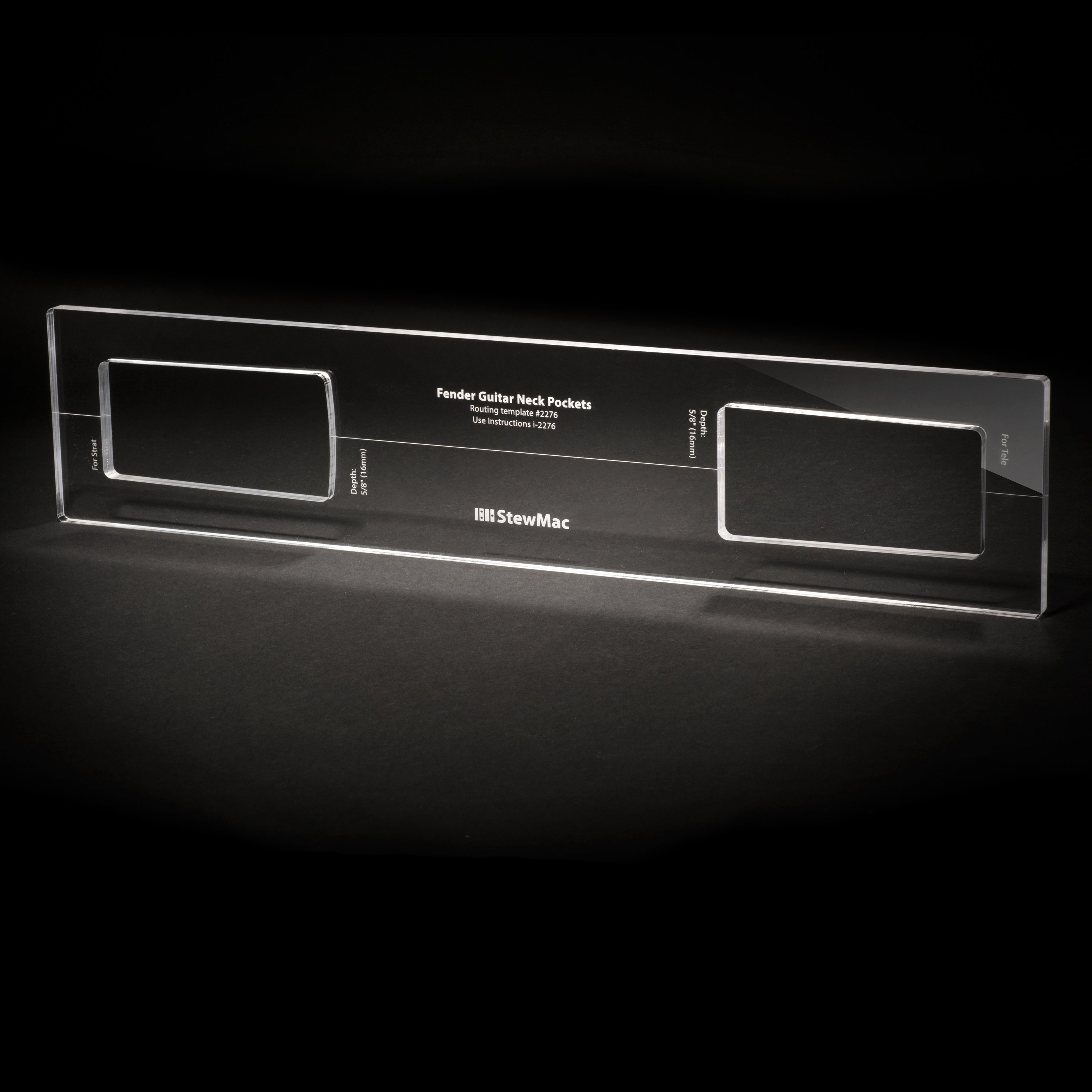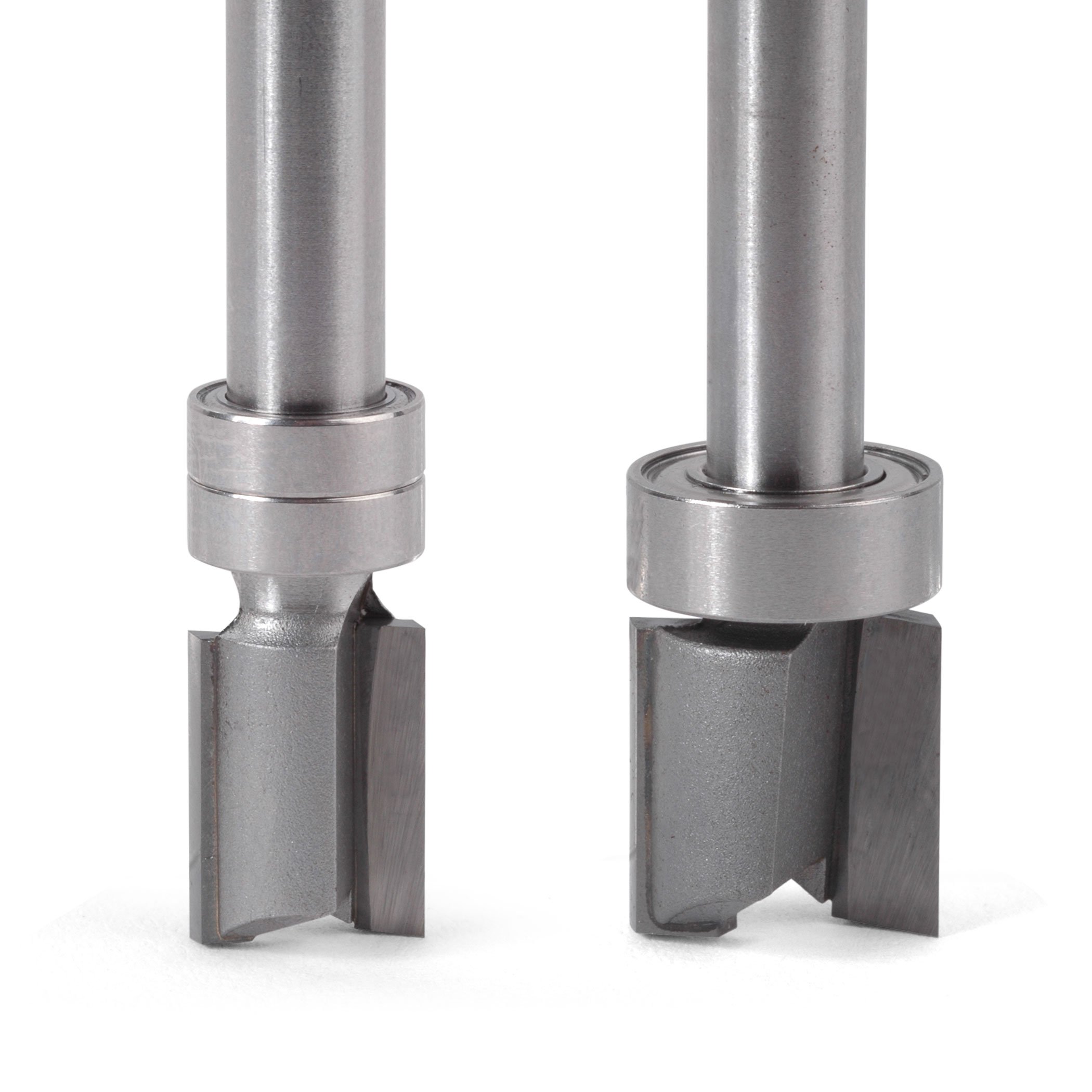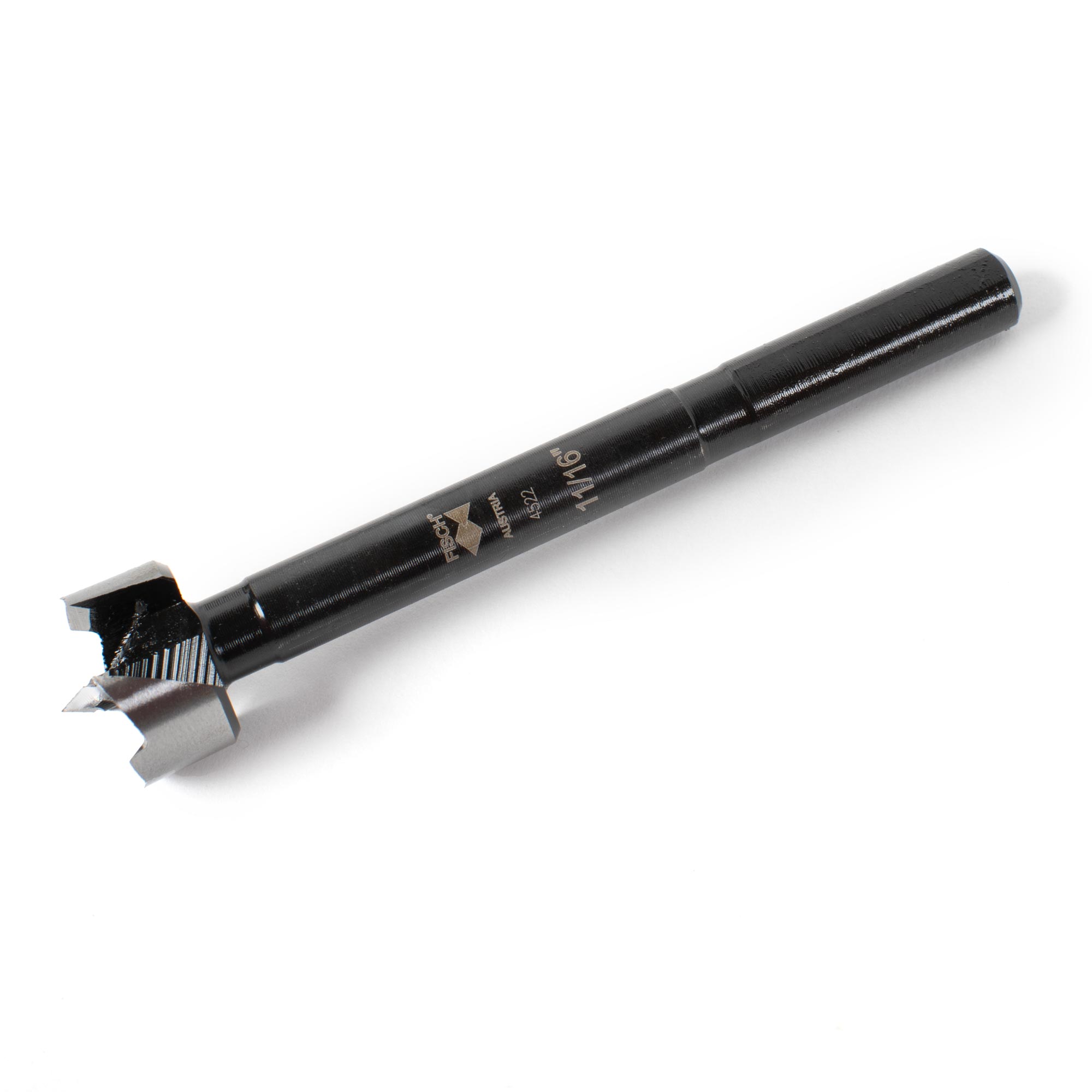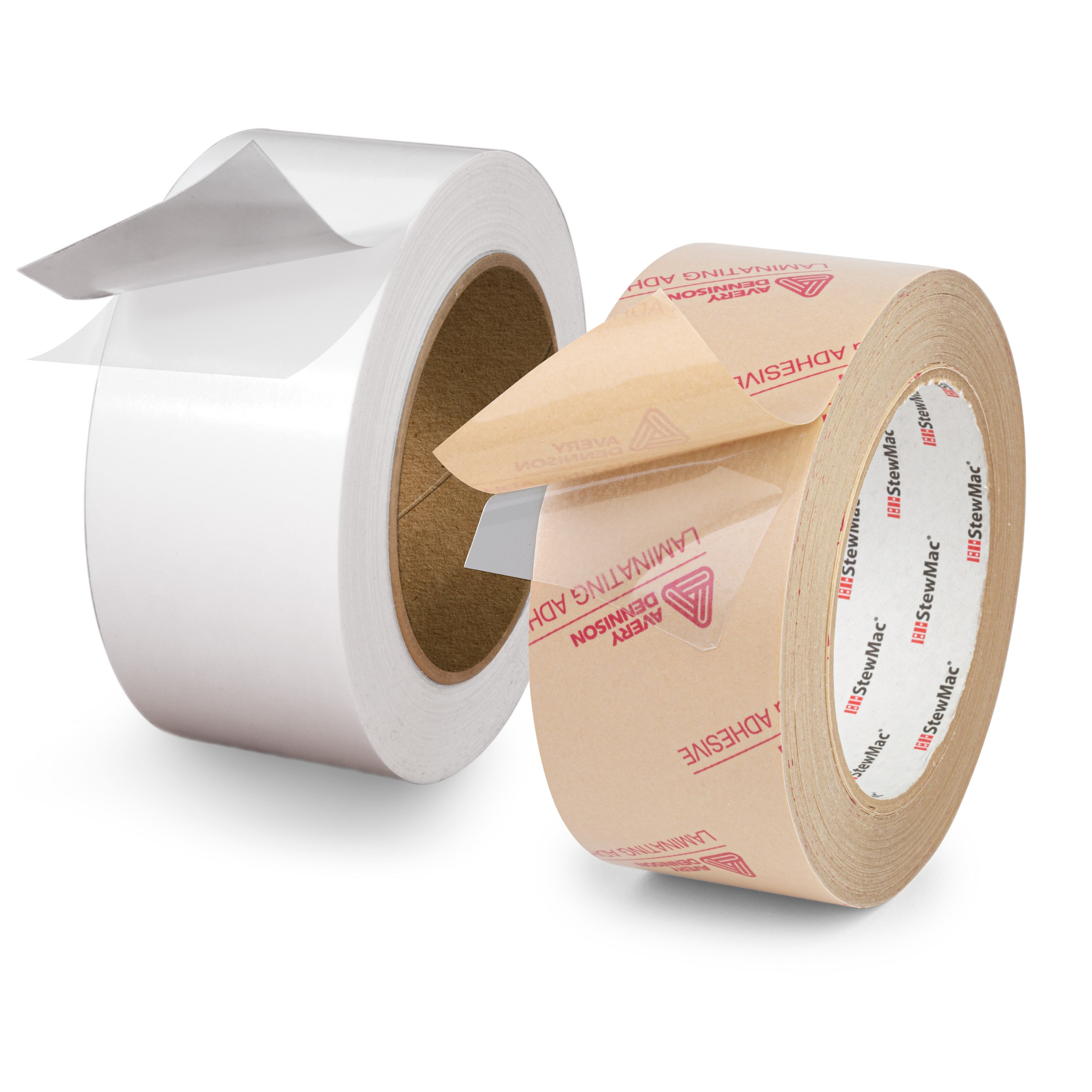Neck Pocket Routing Template for Fender Instructions
Neck Pocket Routing Templates are for building solidbody guitars or basses with bolt-on necks. There are two templates, each with two different cutouts:
#2276 For Guitar has a radiused heel profile on one end, shaped for Stratocaster®, Jaguar®, Jazzmaster®, and Mustang® necks. The opposite end has a square heel for a Telecaster® neck.
#2277 For Bass is shaped for necks with radiused heels. One end is sized for Jazz Bass® and P-Bass®, while the other is for Fender short scales, like Musicmaster® and Mustang®.
Draw a centerline on the workpiece. On this centerline, measure the length of the neck pocket and mark that point. Most Strat and Tele pockets are 3" long, P- and Jazz Basses 3-7/8", and short scale basses are 4-1/4" long. Align the template to the mark and use a sharp pencil to trace its neck pocket shape onto the workpiece.
Don't try to cut the depth in one pass
The depth of most neck pockets is 5/8". Trying to cut to this depth in one pass is not practical—it is risky and difficult to control. Using your 1/2" ball bearing router bit (#0693), the maximum depth you should cut in one pass is approximately 5/16" to 3/8". Cutting the pocket will take two or more passes.
Tip: Before routing, use a Forstner drill bit to remove the bulk of the wood in the pocket. This reduces the load placed on your router. We suggest an 11/16" bit, drilling to no more than 3/8" deep. Holes left by the Forstner bit's point will be removed when you rout to the final depth of 5/8". Use care not to drill outside of the neck pocket outline.
The template is oversize
The template is approximately .015" oversize to allow for variations in neck width and finish thickness. Compare your neck's heel to the template, and measure the gap with feeler gauges. To rout a smaller neck pocket, reduce the template size by adding layers of masking tape. Check the fit of the neck within the taped template until it is snug.
Remember, the finish will add thickness
A typical neck finish is about .004" to .006" thick. If you're working with unfinished parts, keep in mind that you don't want any finish buildup in your neck pocket, so mask it off before spraying. Any overspray in the neck pocket should be carefully sanded back once the finish cures.
Rout in a series of side-to-side passes
Use clamps or strong double stick tape (#1689) to secure the template to your workpiece.
Start the router bit at the treble side and cut across to the bass side. Rout the pocket with a series of treble-to-bass passes. End with a pass around the perimeter of the pocket to ensure smooth and even edges.
After your first pass, remove the template. Lower your bit to the final depth of 5/8"; the bearing will now ride on the cavity wall, using it as a guide.
Creating a larger pocket
For wider necks such as 7-string guitars and 5 or 6 string basses, you can create a wider neck pocket by cutting one side first, then moving the template to cut the other side. Position the template away from the centerline equally on both the bass and treble sides. The template must be unclamped after the treble side is cut and repositioned to cut the bass side. Align these off-center cuts slowly and carefully!



